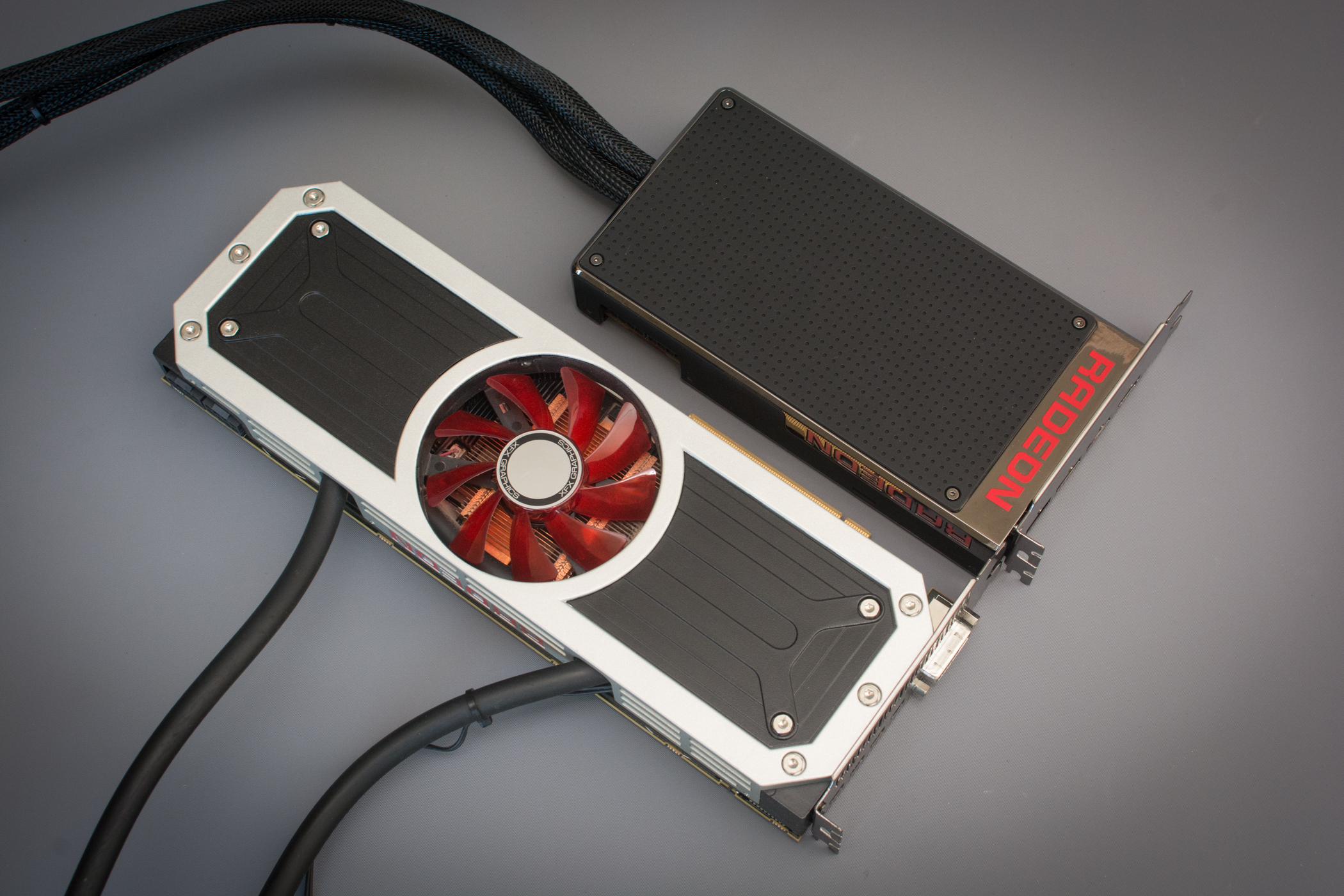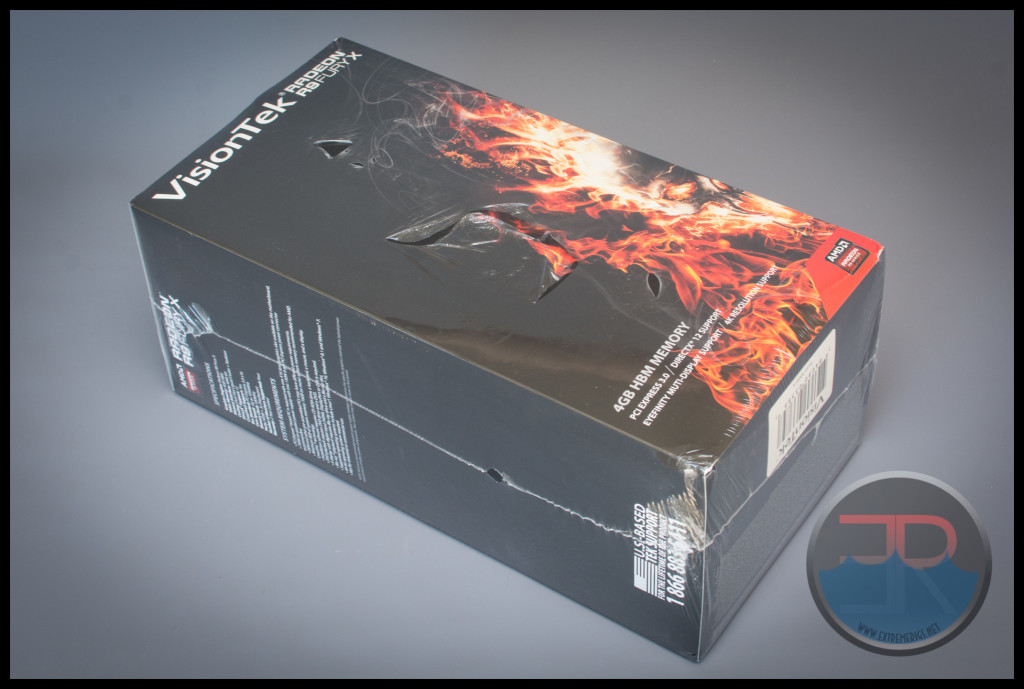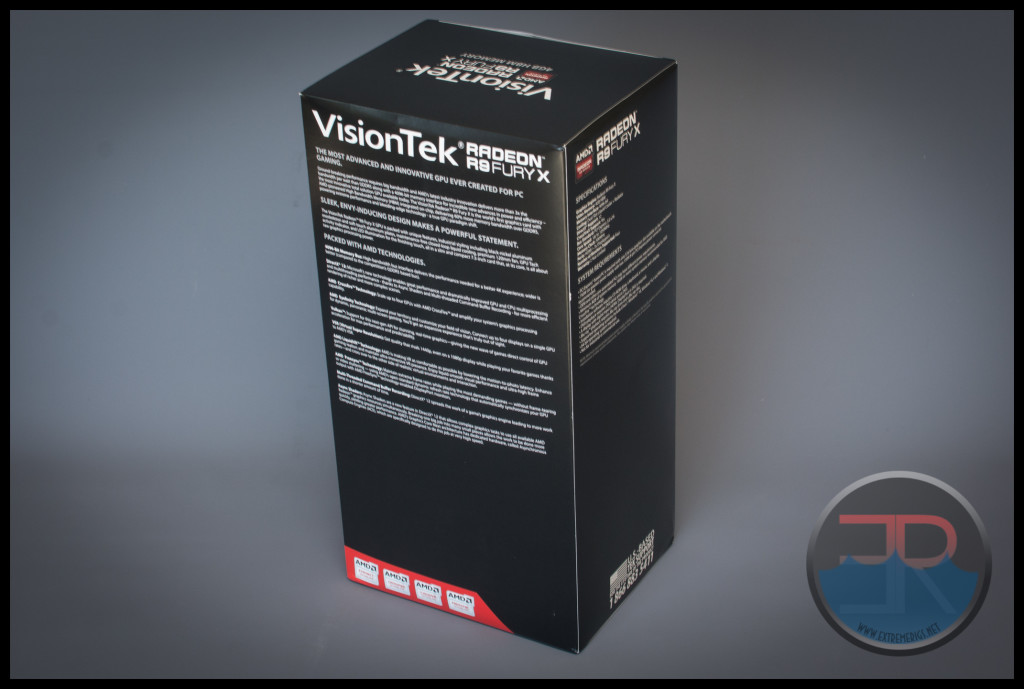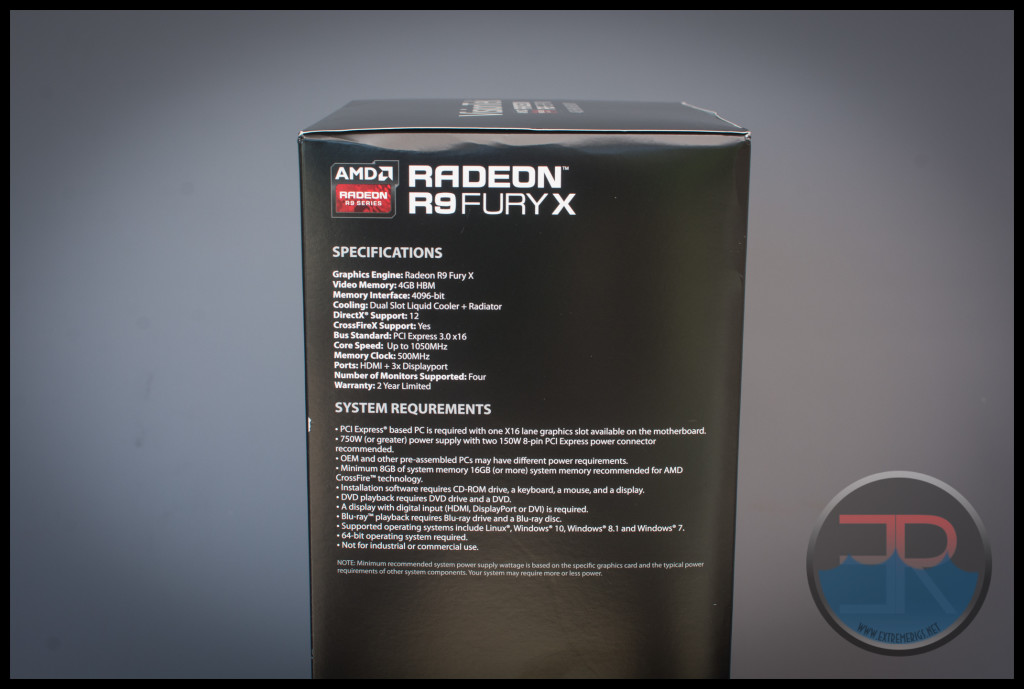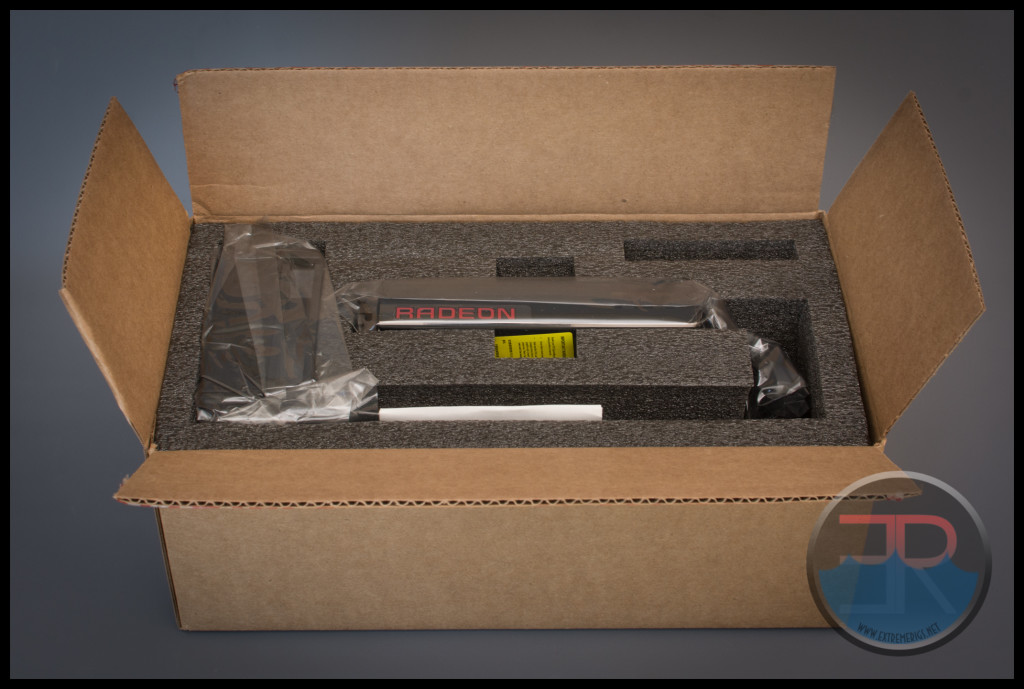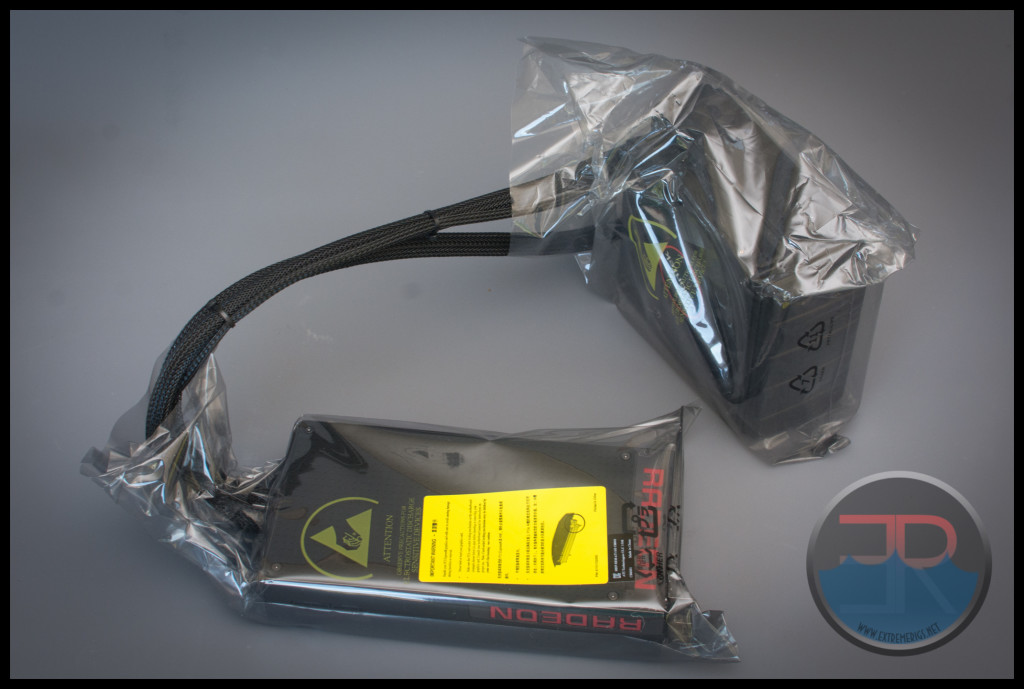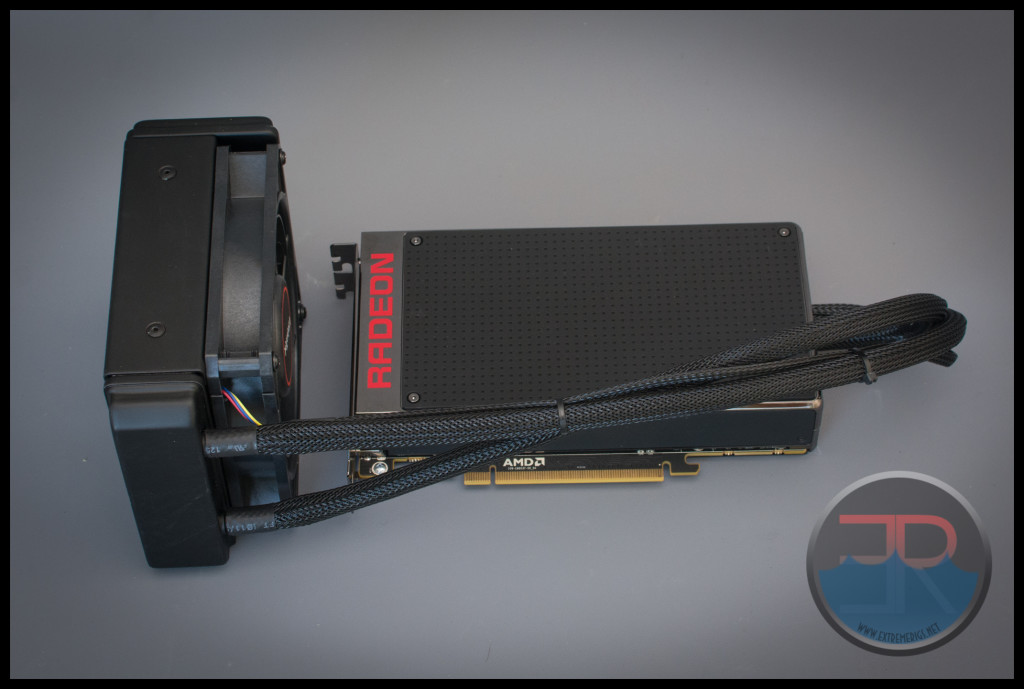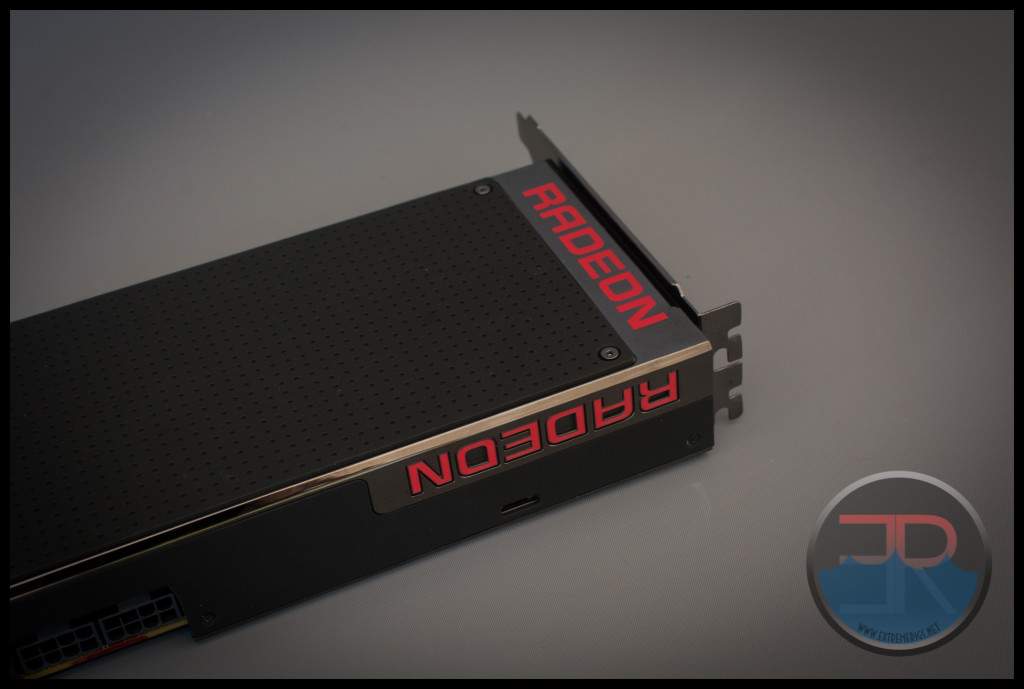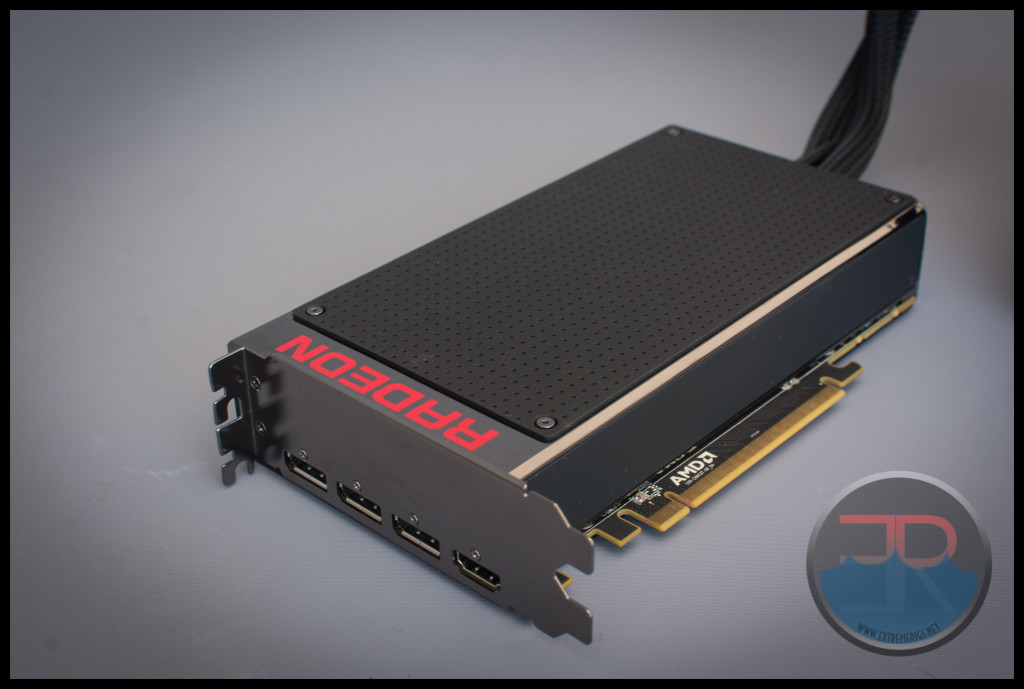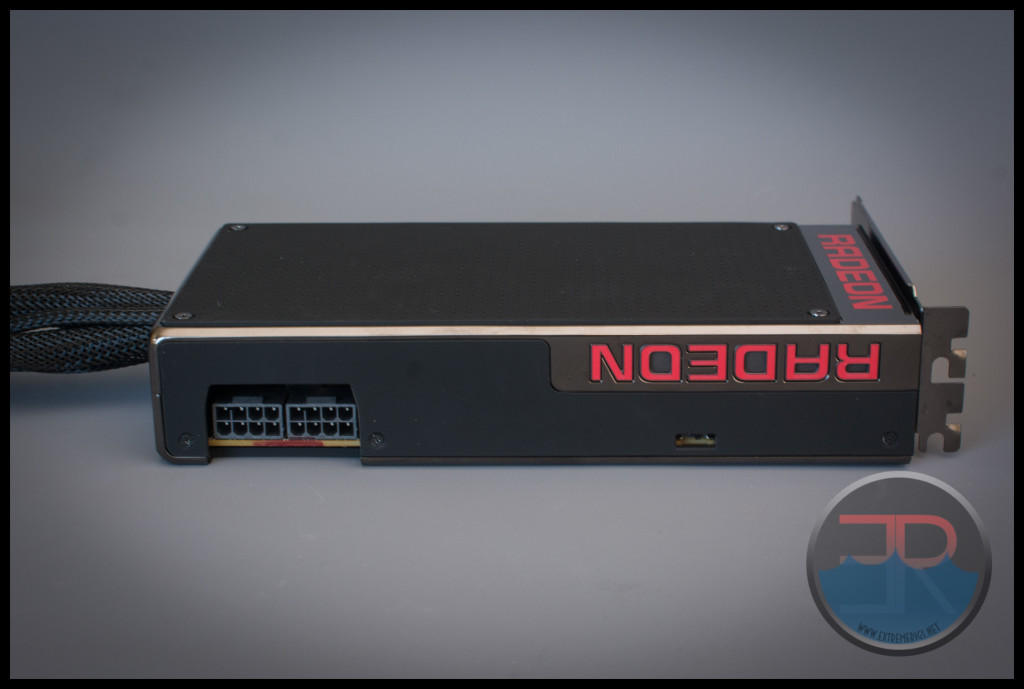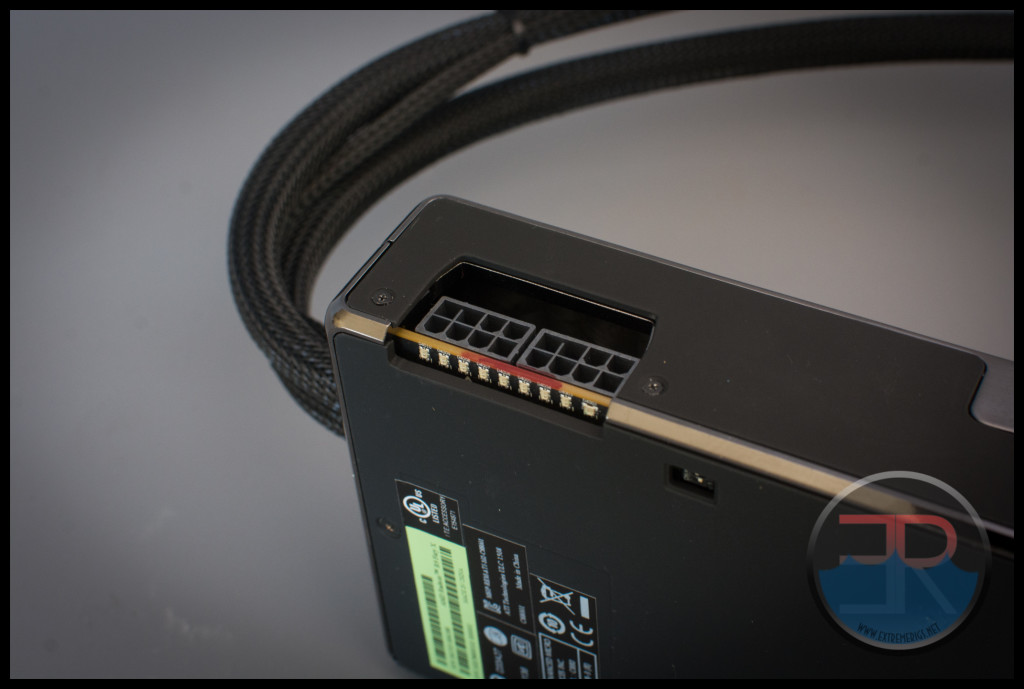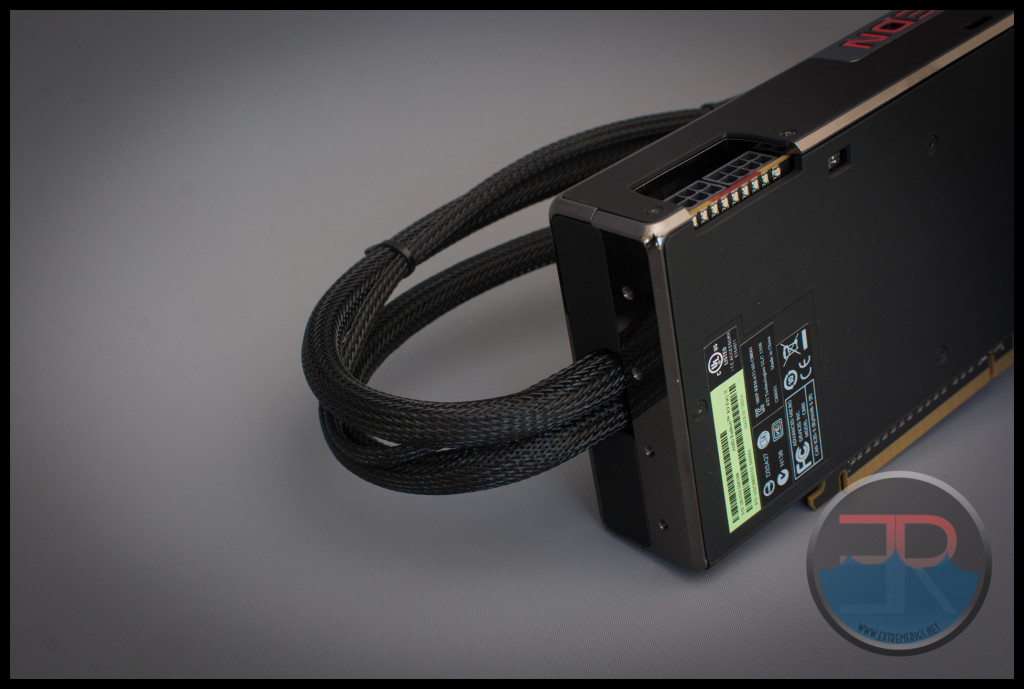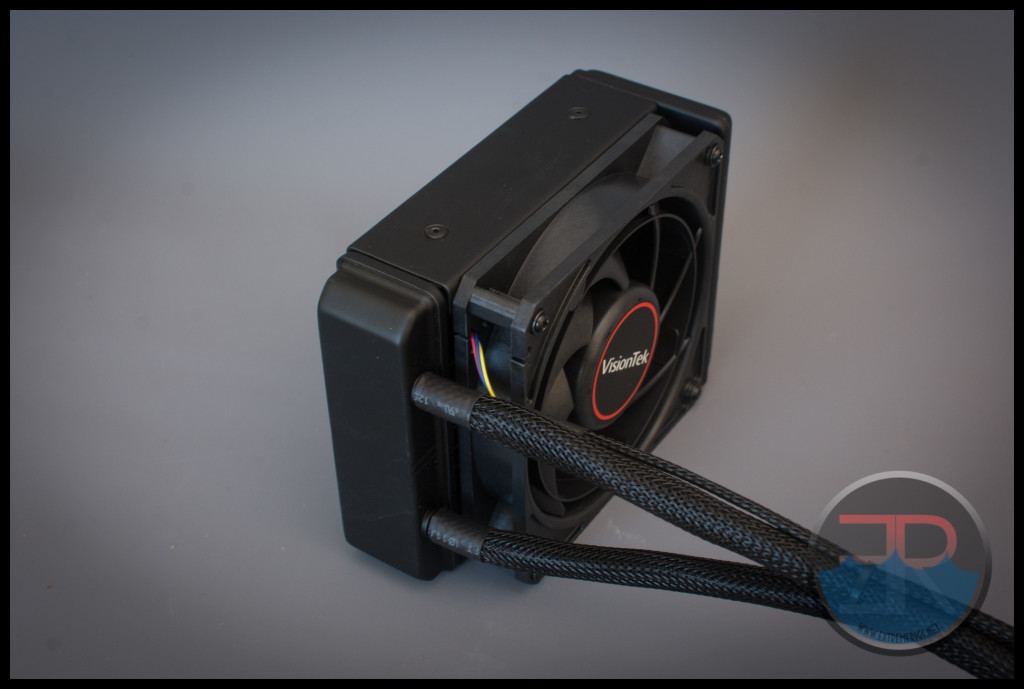Radeon Fury X
The R9-295×2 was the first AMD card to include an AIO, however it wasn’t exactly mainstream. The Fury X of course still isn’t mainstream as it is AMD’s high end offering but it is the success of the 295×2’s cooling system that enabled the Fury to also share a similar system.
Our Fury X is branded by Visiontek though there really is no difference between any of the Fury X cards as they are all the same reference design by AMD. This is also true for our XFX R9-295×2 which is a standard reference AMD design as well.
There is a lot of marketing blurb of the Fury X – far more words than were on the 295×2 box, despite the smaller box. This is perhaps deserved because the Fury X brings some new technology to the market. It’s the first GPU to make use of HBM (High Bandwidth Memory). Instead of using individual packaged memory chips on the PCB, the memory chips are integrated into the main GPU core package itself. This enables a far wider memory bus. This means the bus can be slower but still provide more bandwidth than the traditional GDDR buses.
At the launch of the Fury X there was a lot of marketing about HBM that smelled just plain wrong. There were a lot of people saying that 4GB of HBM was not the same as 4GB of GDDR5. The reasoning was that the higher bandwidth meant you could get away with less memory because it could be cached in and out more quickly. The reality is that VRAM caching is still going to limit performance in the same way and 4GB is 4GB. In our Triple Fury X at 5K testing we saw this exact behavior that the Titan X with it’s 12GB did not exhibit.
Of course partly this was being said because Nvidia had launched the 980TI with 50% more memory than the Fury X and so AMD had to say that 4GB of HBM VRAM was enough even while there were 8GB varieties of the 390x being sold that suggested otherwise.
Interestingly the Fury X’s “This Side Up” sticker was not replicated at a a higher level, nor did it match the orientation of the external packaging.
The packaging for the AIO was much better thought out than the 295X2. But then the Fury X is significantly smaller.
The Fury X is actually far sexier in person than it looks in pictures. It has soft touch plastics covering it, and the “sealed” up nature of it without a fan on the main body really helps to give it an air of mystery.
The same Radeon text that looks cheap on the 295×2 looks far more fitting here.
The output ports have changed. The DVI-D port is replaced by HDMI and the 4 mini display ports have been downsized to 3 full sized ports. While we don’t have the 6 outputs that Eyefinity could put out, we do feel that 3 Display ports is enough for this generation. It’s nice that the output ports are in a single row so that a water block can make this GPU a single slot solution just like the 295×2.
Just like the 295×2 the Fury X uses 2×8 pin pcie power connectors. However this doesn’t mean that the actual power consumption is the same simply that the Fury X has appropriate power connectors for it’s power usage.
One nice feature on the Fury X is that it has surface mount LEDs on the PCB below the power conneectors that show the current power usage.
While the backplate is also soft touch, it’s less functional than the 295×2. It isn’t being used to dissipate heat anymore, but it still does have those annoyingly ugly stickers on it:
The tubing and power for the radiator unit is now sleeved.
With the exception of the very end of the fan wire:
The fan seems to be a high speed gentle typhoon PWM type. This is good if it is because gentle typhoons are awesome radiator fans. The high speed part might be overkill though.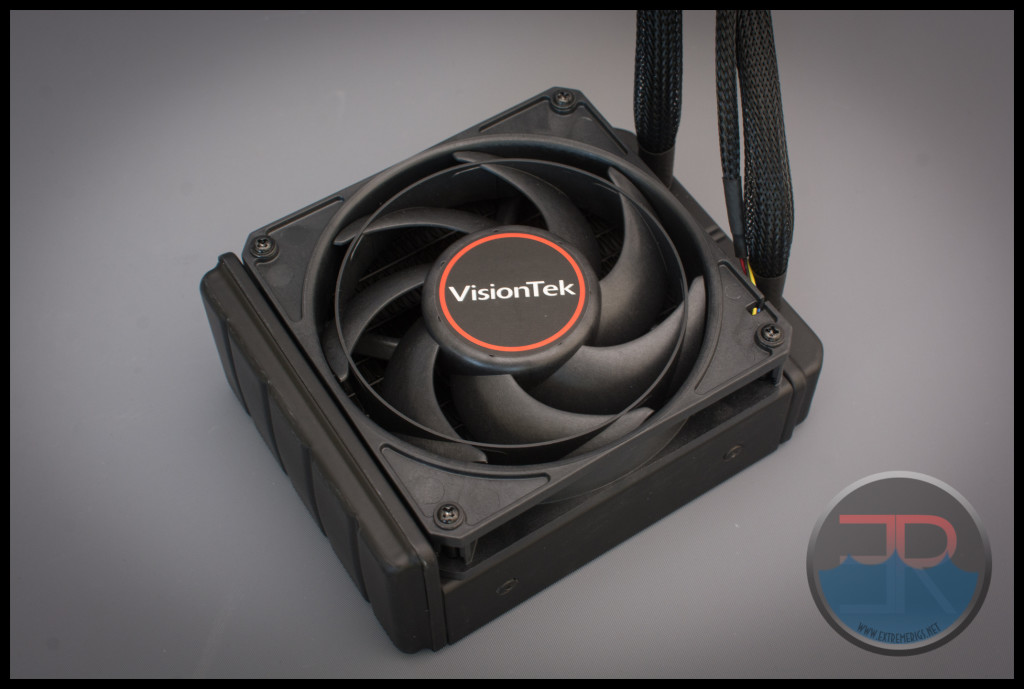
The radiator is reasonably thick and again is the same width as the 120mm fan: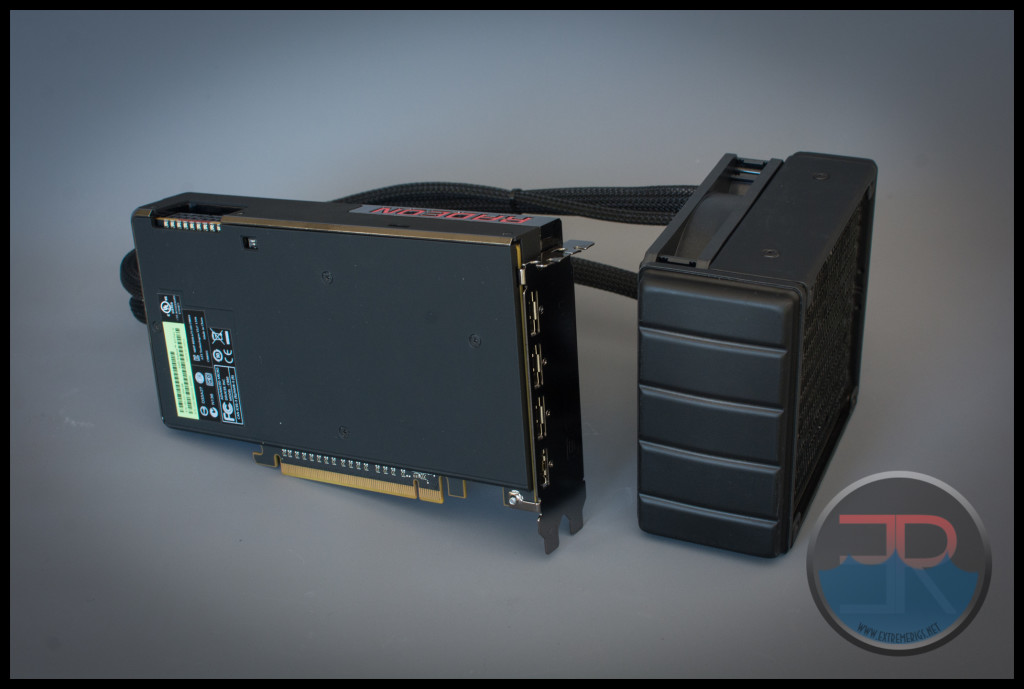
The tubing is long enough to be useful in most cases: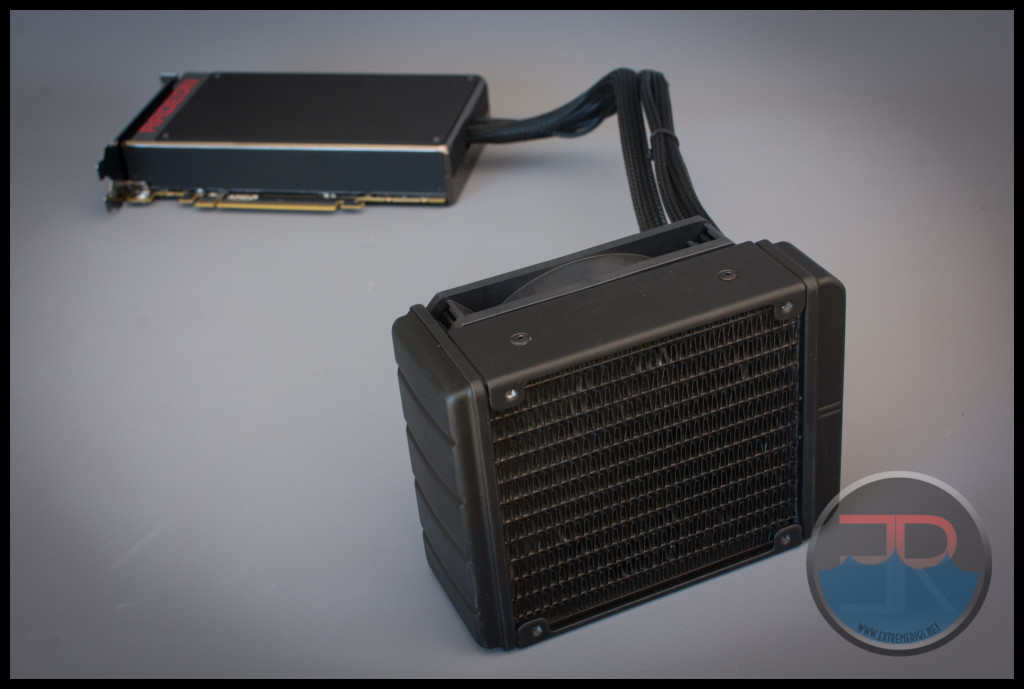
The radiator is almost the exact same thickness as the R9295x2 however the end tank now goes all the way to the fan. This makes the design a bit less flexible: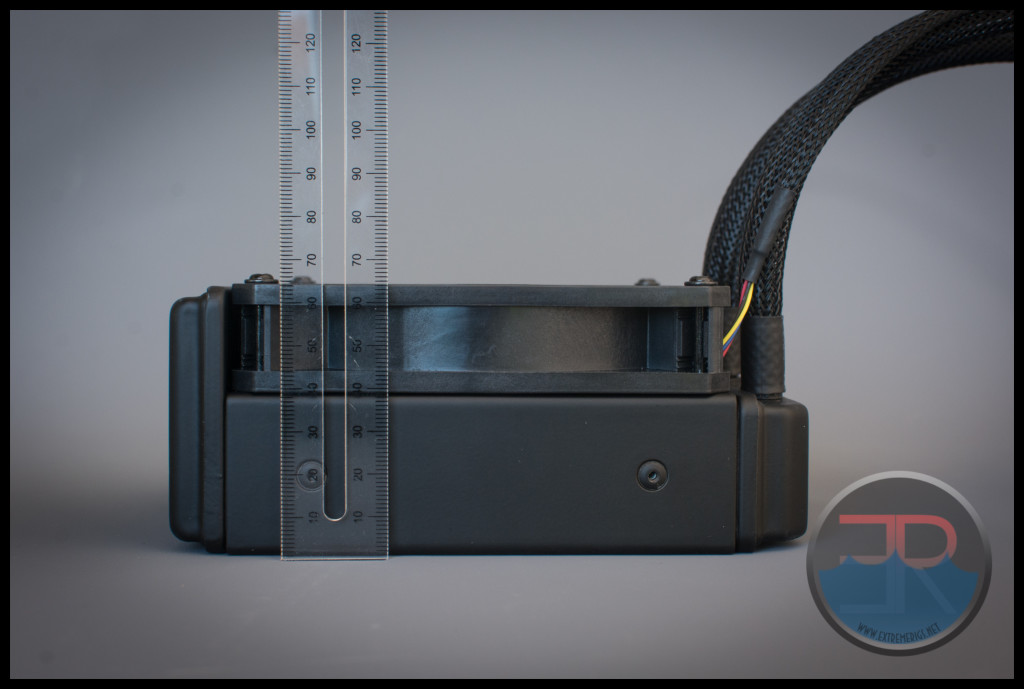
Otherwise though the dimensions are almost identical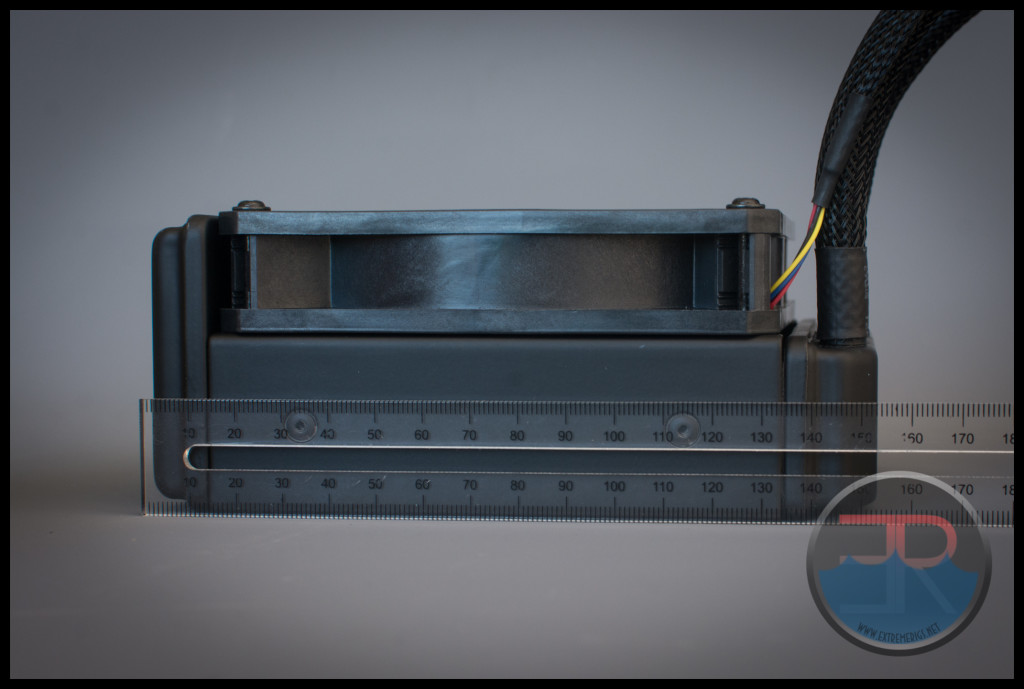
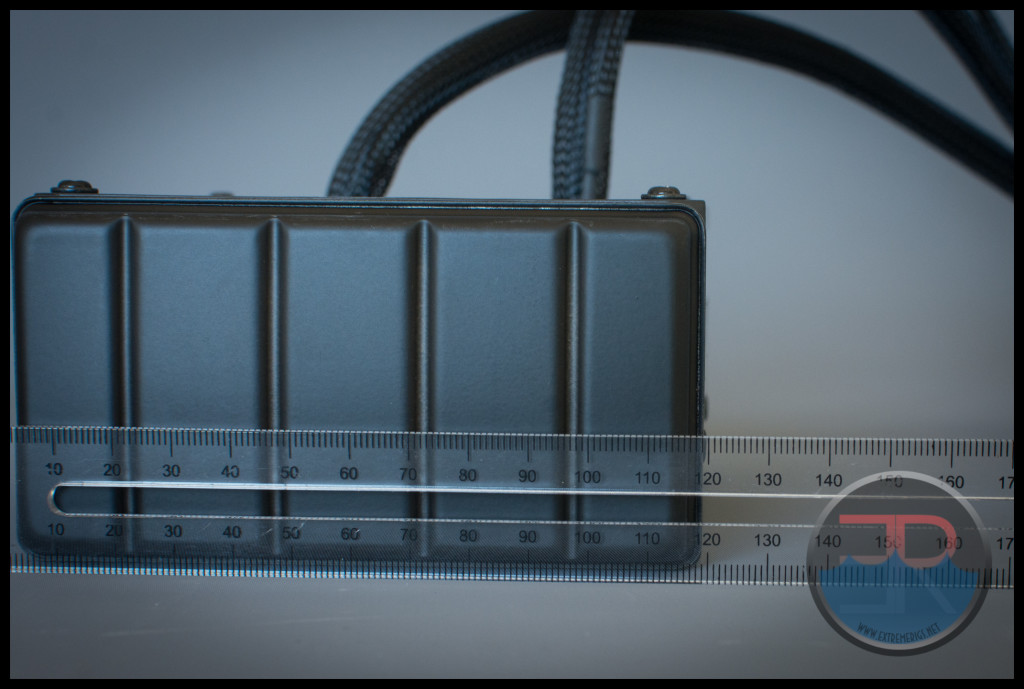
The radiator fins however are much less dense than the 295×2. This makes sense as the expected power is less. What doesn’t make sense is why the fan speed has gone up. You’d expect the high speed fan to be on the 295×2 and the lower speed fan to be on the Fury, not the other way around.
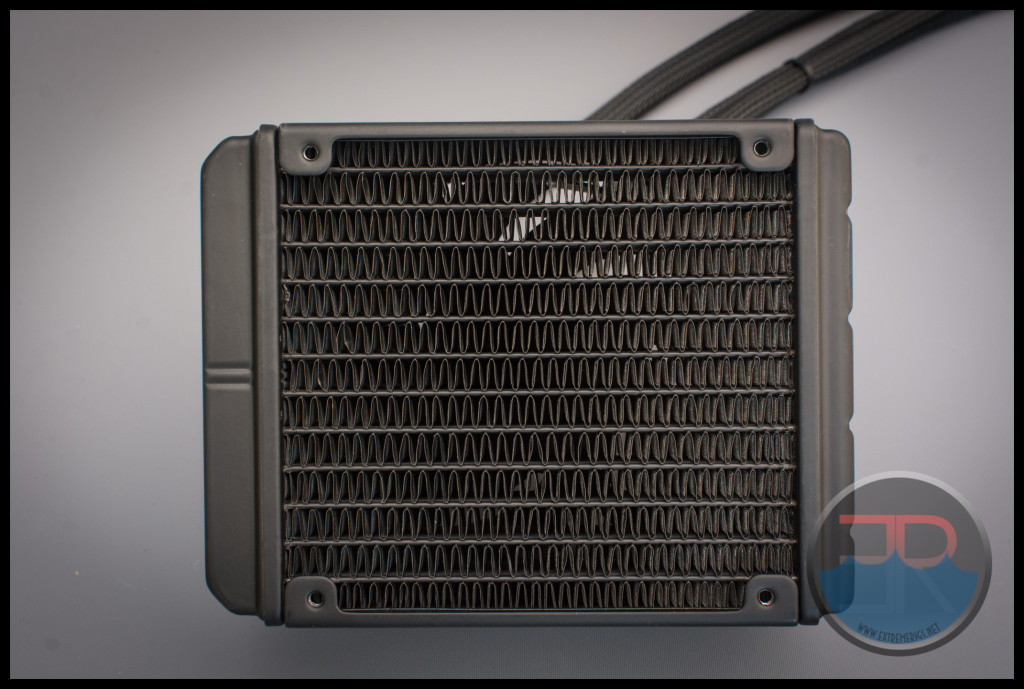
Let’s compare the two directly now.







